A two-day workshop
A flexible, modular-based, programme to heighten participants’ awareness of ways in which their operations can affect the environment, the principles of environmental management and the practical steps they need to take as individuals and as an organisation to improve environmental performance.
learning objectives
- Increased awareness of relevant environmental issues
- A greater understanding of, and commitment to, the organisation’s environmental management programme
- Preparation for any responsibilities they may have under an Environmental Management System
- Further benefits according to options chosen
Expert trainer
Subash is a Past President and current (2015) vice-chair of the Board of Trustees of the Chartered Institution of Occupational Safety and Health (IOSH). A Chartered Fellow of IOSH, Subash has a wealth of experience in risk management, having worked across a range of sectors and disciplines in a truly diverse 25-year career to date.
Session outline
1. Environmental awareness
- Definition of ‘the environment’
- Key environmental issues:
- Global warming
- Ozone depletion
- Acid rain
- Air quality
- Water pollution
- Contaminated land
- Land take and green belt shrinkage
- Resource usage
- Habitat destruction and species extinctions
- Option: This module can be used to explain the key environmental issues related to the activities of your own organisation. Diagrams, photos, pictures, examples and statistics relevant to your own organisation are used where possible to illustrate the points being made.
2. Environmental legislation
- Key elements of environmental legislation affecting the activities of your organisation – including international, European and UK legislation.
- Legislation of particular relevance to your organisation – how it affects the operations of your organisation
- Option: Legislation can be dealt with according to which aspect of the environment it protects (eg, air, water, waste) or which part of your organisation’s activities it affects
- Consequences of breaching legislation
3. Environmental management systems
- Overview of what an environmental management system is:
- How is an Environmental Management System (EMS) designed and put together?
- Key elements (emphasising Plan – Do – Check – Review cycle)
- The need to continually improve
- Pros and cons:
- Reasons for having an EMS
- Benefits of an EMS
- Consequences of not managing the environment
- Costs of installing an EMS
- Explanation of ISO 14001 and EMAS standards and guidance as applicable to the EMSs of your organisation:
- Overview of your organisation’s EMS
- How it was set up / is being developed / operates
- Who is responsible for it
- Key parts of system (eg, environmental policy, objectives and targets) identified and discussed
- EMS documentation – what and where it is
- Workshop option: Brainstorm ‘Pros and cons’ with the participants, come up with all their ideas for good and bad things about EMS and demonstrate that the ‘good’ list is longer than the ‘bad’
4. Environmental consequences
- Define what an environmental impact is and discuss how they are determined, with reference to the EMS
- Identify why we want to determine the environmental consequences of operations and activities; how they are used in the EMS for planning, and reducing the impact on the environment
- Establish key environmental consequences of construction and operational activities on the site; discuss significance ranking and the control measures in place in your organisation
- Workshop option:
- In small groups, participants are asked to identify the impact on the environment of your organisation’s activities or a part of their activities.
- They are then asked to rank these impacts in terms of their significance, using guidelines provided to help them be aware of the contributing factors (eg, frequency, severity).
- For a selected number of the impacts, the participants are asked to identify what control measures there are and which of these they play a part in.
- All stages can be discussed with trainers as a whole group at various stages during the workshop.
5. Protected species, nature conservation and invasive weeds
- Nature conservation, landscape and visual issues in the planning process – overview of key nature UK wildlife legislation, EIA, appropriate timing of surveys, Hedgerow regulations and landscape and visual impact issues
- Ecological issues – ecological legislation, significant species, hedgerows
- Archaeology in the development process – why archaeology is important, organisation in the UK, legislation and planning guidance
- Construction phase issues and consents – major environmental issues during construction, including water resources and land drainage consents, discharges to land or water, water abstraction, public rights of way, tree protection, waste management, Special waste, noise, good practice pollution control and Environmental Audits
- Identification and management of invasive weeds – including legal position regarding management
6. Chemicals and fuels handling and storage
- How health and safety management is closely linked to environmental management of materials
- Planning – what mechanisms are in place for planning materials use; legislation, guidance and policies which define how to manage materials
- Materials storage – what are the considerations for storing materials, covering:
- Labels: what are the different types and what do they tell us?
- Storage facilities: what are the requirements for safe storage of materials (eg, signs, secondary containment, access, segregation, lids/covers)
- Handling: safe handling for protecting the environment, organisational procedures, high risk situations (eg, decanting, deliveries), how to reduce the risks (eg, use of funnels, proper supervision, training)
- COSHH and MSDS: brief explanation of legislation and its role in environmental control of hazardous materials, how to use the information provided by COSHH assessments
- Option: These sessions can be illustrated with photographs/pictures and examples of good and bad storage and handling practices
- Workshop Options: Labelling Quiz – quick-fire quiz on what different labels tell us; Build a Storage Facility – participants are asked to consider all the environmental requirements for building a safe storage facility for their organisation
7. On-site control measures
- Overview of the legislation associated with nuisance issues on site and mitigating problems when they arise
- Examples of bad practice, including fuel storage tanks and mobile equipment – costs involved with prosecution of fuel spills, remediation costs, management costs, legal fees, bad PR coverage
- Identification and management of contaminated land and relevant legislation
- Workshop option: Participants are provided with a site plan containing information on site features, environmental conditions and indications of potential issues
8. Waste management
- Why worry about waste? – a look at how waste disposal can impact on the environment, illustrated by examples of waste-related incidents, statistics on waste production on national, industry-wide and organisational levels, landfill site space, etc
- Legislation – overview of the relevant legislation, what the main requirements of the regulations are, what penalties there are, and the associated documentation (waste transfer notes)
- Waste classification – a more in-depth look at how waste is classified under legislation according to hazardous properties, referring to Environment Agency guidance
- Handling and storage requirements – what are the requirements of the applicable waste legislation and how are they covered by organisational procedures? Examples of good and bad environmental practice associated with handling and storing waste.
- Workshop option: ‘Brown bag’ exercise – participants pass round a bag containing tags each with a different waste printed on. They are asked to pick out a tag and identify the classification and the handling, storage and disposal requirements for the waste they select
- Waste minimisation – overview of the waste minimisation ‘ladder’ and its different options (elimination, reduction, reuse and recycling), benefits of waste minimisation, examples of waste minimisation techniques
- Workshop option: Participants are asked to identify opportunities that actually exist within the organisation for minimising production of waste that are not currently being taken advantage of
9. Auditing
- Requirements for environmental auditing of operations
- Auditing the EMS
- Types of internal and external audits
- Requirements EMS standards (ISO 14001 and EMAS)
- Carrying out internal audits and being prepared for external audits
- Workshop options:
- Mock audit ‘Brown Bag’ – can be used either for trainers to test participants as if they were in an audit situation, or for the participants to test each other and practice their auditing technique. The bag contains tags each with a different topic printed on (eg, waste skips); participants pass the bag round and select a tag; they are then questioned by the trainer or another participant about that topic as if they were in an audit situation. If the participants are auditing each other, they will be provided with a set of guidelines to keep in mind during the workshop.
- Virtual auditing – a more practical workshop where participants review photographs of situations/activities relevant to the organisation’s operations. They are asked to identify all the good and bad environmental practices that are occurring in the situations.
10. Incident response
- What should you do when an incident does happen?
- What should be in a spill kit?
- When should you call in the experts?
- When should you inform the Environment Agency or Environmental Health Officer?
- Workshop option: The participants are provided with some incident scenarios and asked to develop a response to the incident
11. Monitoring and reporting
- Environmental monitoring programmes and procedures
- Monitoring and reporting as control measures for environmental consequences
- Monitoring and environmental ‘STOP’ card systems – personal and behavioural monitoring and reporting









